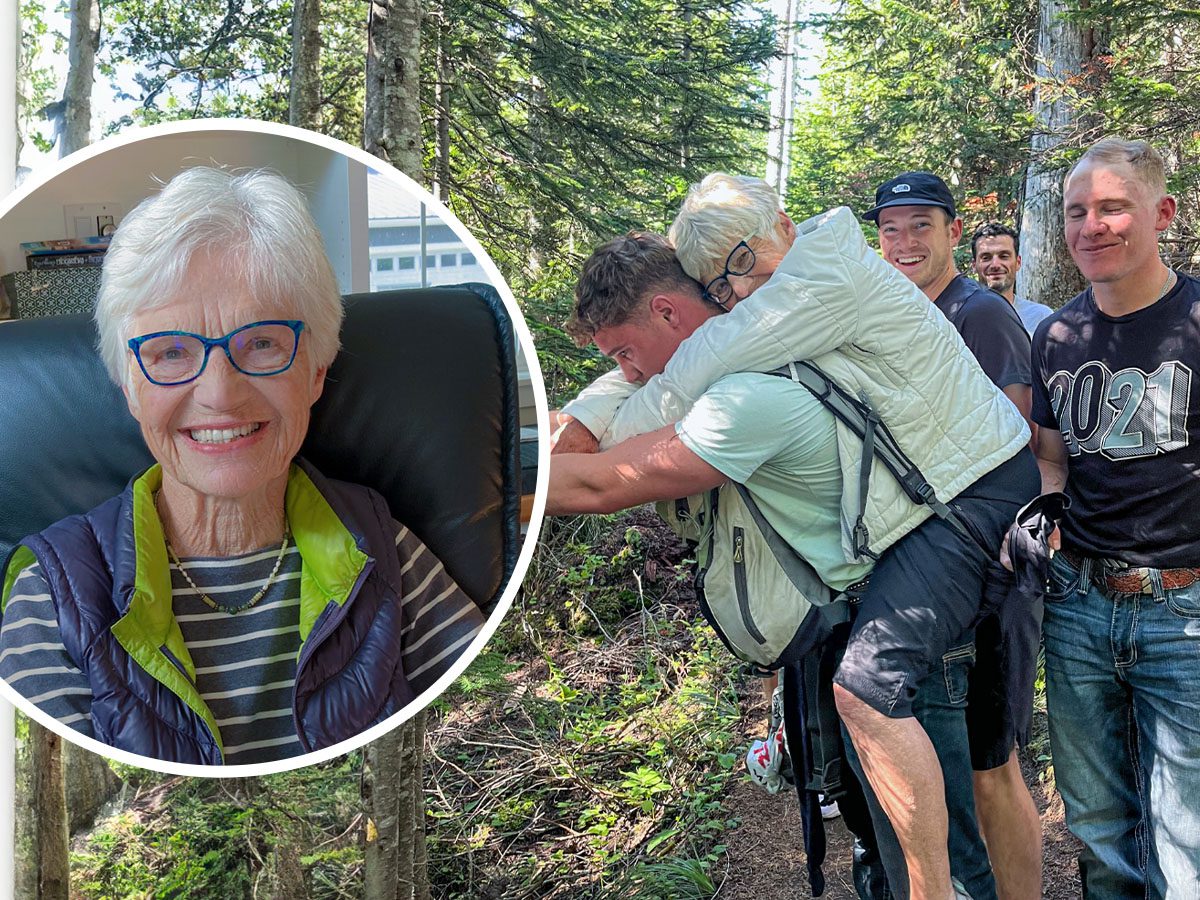
Once a year, Ursula Bannister climbs to High Rock Lookout, a viewpoint near Ashford, Wash., where she scattered her mother’s ashes 23 years ago. She brings flowers for her annual visit.
Bannister, 79, usually hikes with a family member or friend along the 3.2 mile trail, which is a relatively difficult trek. This year, on Aug. 28, Bannister went on her own, figuring she’d be fine because she’s an experienced hiker.
“It’s steep so it’s considered a hard hike, but because I’ve done it so many times, I wasn’t nervous about it,” said Bannister, who lives in Tacoma, Wash.
Bannister arrived at the trail around 11 a.m. and made her way to the lookout. As she headed back down, she made a misstep, and her foot got caught on a hole in the ground. She fell forward.
“By the time I sat up, my foot was pointing the wrong way. I knew right away I had broken my leg,” she said. “I tried to get up with my hiking pole and it collapsed on me.”
Bannister cried out for help, and before long, a stranger approached and called 911. They were told a search and rescue team would arrive in five hours.
“It wasn’t very encouraging,” Bannister said. “I asked this man to please ask anybody if they had pain killers, because at that point, the pain was pretty substantial.”
No one in the vicinity did. But two young men at the lookout came over to see what was going on. When they saw Bannister on the ground in agony, they immediately made an offer: They could carry Bannister to the bottom of the trail.
Troy May, a U.S. Air Force Airman stationed at Joint Base Lewis-McChord, was at the lookout that day with his fiancé and a friend who was visiting from New Mexico.
“I knew I was capable of carrying her down,” said May, 20. “I really didn’t make much of a decision, I just knew I needed to carry her down if I could.”
May eased Bannister onto his back and started hiking downward. He carried her for most of the nearly three-hour journey, and his friend, Layton Allen, carried her for the rest.
Others pitched in as well: Shortly into the hike, May’s boots were giving him blisters. A man he didn’t know on the trail saw the situation and gave May his shoes.
“That was just one kindness,” said Bannister.
A physical therapist bandaged Bannister before they headed down the trail and built a makeshift splint for her leg out of wooden scraps, and an occupational therapist did breathing exercises with her to help calm her.
“I was just overwhelmed with gratitude that these people literally came out of the woods to help me and they were totally unselfish and kind,” she said.
During the long hike down, her rescuers shared stories and asked Bannister questions about her own life to distract her from the mounting pain. She told them about her childhood in Germany, and what it was like to move to the United States in 1959 when she was 14.
“She had a bunch of cool stories,” said May. “We were trying to keep her talking to make the hike go faster … we really had quite the team.”
Their efforts to distract her worked, Bannister said.
“If I didn’t focus on my pain, I didn’t scream quite as loudly,” she said. “I think we were all just giving each other psychological support.”
Once they reached the parking lot, Allen drove Bannister to the Tacoma General Hospital — about two hours away — and May followed them in his car. They waited at the hospital until Bannister’s son arrived.
“I thought these people were behaving like angels coming from the sky,” she said. “I was just thankful that these guys were willing to do this.”
At the hospital, Bannister learned she had broken her leg in three places — her tibia, fibula and heel bone.
“The emergency team was very impressed by the splint that the therapist had built,” said Bannister, adding that doctors told her the damage would likely have been worse had Bannister waited longer to get medical attention.
She arrived home that night at 1 a.m. with crutches and had to wait one week for the swelling to go down before she could undergo surgery.
“I am now the proud owner of 11 screws … and a titanium plate in my leg,” Bannister said.
Over the past few weeks, Bannister has been recovering in a wheelchair, and her orthopedic surgeon expects she will be able to put weight on her right leg within four to six weeks.
“I am healing. I’m on the right path,” she said.
During her recovery, the people who helped her hike down from High Rock Lookout have checked in several times — including May, who received an Air Force Achievement Medal on Sept. 9 for helping to rescue Bannister. He was also featured in a story on a U.S. Air Force website.
“I think we’ll be friends for a really long time,” Bannister said.
Although breaking her leg was painful and unpleasant, the extent to which strangers rallied around her made it a positive experience, overall.
This article originally appeared on MSN.


